Seacoast Safari
Seacoast Safari Ride, 2015
I started checking the weekend forecast on Sunday for the following weekend. The tiny icon on the NOAA page foretold the future weather seven days away by means of auspicious beaming suns! I checked daily thereafter, looking with hope to see if those happy little guys were still there smiling.
Last summer, with lots going on with the family and work, I was on my bike much less often and did not go on any charity rides—unusual, as, for the past seven summers they have been as much the defining elements of my favorite months as farm stand corn and fresh garden tomatoes. One hundred-plus mile bike rides benefiting a host of worthy causes for which I have ridden are fixtures of my summers and have produced a running film of scenic New England tree lined roads with rolling hills, stunning houses, a lottery of landscapes and vistas ranging from beaches to pine lined whispers of roads sweeping by in almost a dreamlike thread. These images float in and out of my mind’s eye all year long, distracting me from dark winter days and the dreary reign of our many unseasonable Boston months—almost as a friend stopping by, a brief, bright conversation. So this year, I was especially excited to get back on my horse.
For as long as I can remember since first riding it, the Seacoast ride has nested slightly out of my consciousness, like an abstract movie trailer in my imagination. A physical challenge, the height and hallmark of summer, a chance to both push myself hard over a set of miles, and to just lay off the pedals and fly in a flood of brain supplied chemicals down a twisting smooth paved road with the familiar chatter of my free wheel clocking the descent. The rides drifts between coastal flats with rocks and lighthouses, sandy beaches, and rolling hills interrupted by quaint small town squares. These images and amalgamated memories have supplied the backdrop of a sporadic waking day dream, fleeting pictures wedged as fragments of moments between the practical considerations of the here and now.
A road bicycle is a poem of a machine. Beautiful in its minimalistic assemblage, it is a basic geometry that has evolved by seconds rather than degrees as its count of surely a billion or more has mounted over nearly two centuries. Its current forms represent a point in a continuing work-in-progress where the goal is to simplify, minimize, and extract new efficiencies from a limited number of parts and components. Machine as a haiku: five beats, seven, again five—no fewer, no more. Within this sparse handful of parts reside infinite opportunities to innovate, make lighter, smoother, more nimble, stronger, more precise. And little by little these machines change subtly over years and decades, a new lighter frame material or geometry here, an extra gear there, the advent of electronic shifting, a slight shift in down tube angle to improve performance. Feeling the grace of this simple machine responding to the slightest movement—it is as if you can motivate it with just a thought—is a plain joy. Since I was four years old glowing with the indescribable feeling and thrill of a bicycle balanced in motion for the first time, I have been hooked.
I checked the weather again on Monday and Tuesday. Suns! Saturday AND Sunday were yet to be sunny, dry and seasonably warm, but, not hot. Perfect.
Wednesday’s fortune was less gracious. In fact, each advancing day’s prognostication brought with it a progressive downgrade. When Saturday finally arrived it was pouring rain as Caroline and I pulled into the parking lot with the temporary staked registration tents and festive blue and yellow ballooned archway, wet and slumping, to mark the start. I waited with diminishing hope for the rain to stop as we completed our registration and Caroline lovingly pinned my rider number, 79, to my green Quad Cycles jersey.
Following exchanges with riders from my team and a few wet group photographs, a swarm of riders oozed through the balloons out of the parking lot and towards Kittery via Maine coastal intrastate #103 without much fanfare.
The hypnotically slow start lasted only a few miles before it was put to a startling halt by the blue flashing lights of a police car parked diagonally on a steel grate bridge spanning a tidal river, its ominous emittance gravely echoed by the flowing and flashing dusky gray water. Two riders in bright yellow rain slickers were limping towards the near end with assistance from the officer. One was tenderly holding his arm, which appeared to have a bone severely out of place. We learned that both had fallen while attempting to navigate the wet hazard, and the one had broken his arm. It would be advisable, the officer stated in a grim military note, that we walk our bicycles over the bridge.
…
Rustem Gode owns Quad Cycles in Arlington, Massachusetts. His wares consist of a mix of high-end road, cyclo-cross, and mountain offerings mixed in with a smattering of entry level and children’s bikes to fill out the demand curve. His shop and team clothing share a distinctive blue and green cartoonish logo spelling out the word “Quad” in a manner suggestive of motion, albeit one that might require an air sickness bag. The letters could be construed as the transposition of the Road Runner’s signature cloud of dust as he accelerates from the far distance to the foreground and back again. You can nearly hear “meep meep!” when you look at it. For me it’s an image intimately associated with summer and the joy of being on a bike.
Rustem is from Turkey, and he maintains a strong and colorful accent. He uses his hands and eyes to great effect when he talks, and he transmits his content with terrific animation and drama. He is an avid traveler, most often revisiting his beloved homeland to visit family and tour the country on his bike. He is also successful businessman in love with the machines he sells with a nearly religious fervor. Years ago Rustem built my bike, a silky-smooth titanium Merlin model Cyrene with Dura Ace 7800 components whose parts were selected as by a conductor assembling an orchestra. Until Saturday, though, I never spent any significant time riding with Rustem. That changed after the Walking of the Bridge. Rustem was in the group at the front of the soggy would-be peloton, and I decided to charge up to the front to rejoin my team and to reduce, by some minor probability, the likelihood of an accident by way of pile-up.
Nearly immediately Rustem and I settled in with a steady rider apparently happy to lead the pack. It turned out this was a good individual to have on hand, as neither Rustem nor I had any idea where we were going.
For practical reasons having to with safety and available roads, the ride routed us south for the first twenty-five miles before looping us back north for the remaining fifty to our destination at the University of New England. While there was something counterproductive feeling about that first leg — going south to go north on a bike is sort of like flying from Boston to Las Vegas via San—it served to coalesce a small breakaway group that eventually shook out further to be just the three of us after we agreed to bypass the first rest stop.
The motion to not stop, not surprisingly, was entered with conviction by Rustem Gode. Read it again if you missed the irony. Rustem has been riding a bicycle since he was a kid. He learned to race as a teen, and he has continued to ride faithfully throughout his life. Though I have never asked him, I have assumed that his perpetual motion logic runs thus: because one does not get off one’s bike during the course of a road race, neither does one get off during the course of a 75 mile charity ride, or for any other reason. This no-stops edict struck me even more perplexing than usual given that Rustem had not trained even a single day for this event. Too busy with his shop, his family, and a slew of extended vacations, there had been no time to train. But being out of shape did not faze him—either in terms of his enthusiastic cadence, or his unwillingness to stop for any non-essential reason. By the way, as we were re-crossing the walking bridge on the way back into Kittery from Rye New Hampshire, he told me of an essential reason he had stopped when he was young. “I fell off a much higher bridge than this in Turkey when I was a kid on my bike,” he said. “The bridge was over a river. But there was no water in the river. Only deep mud. Well, that mud saved my life. And my bike’s.” Apparently the bike went with him when a gust of wind took it and him and the large sail of a parcel he was carrying in one hand over the edge of the bridge and down to the shock-absorbing, life-saving Turkish mud.
The criteria for a stop now firmly established, we rolled on. Incidentally, this was not my first time experiencing Rustem’s quirky and signature No Stops Resolution. Several years ago my friend Jim Smith and I passed Rustem a half dozen or so times during the same ride—he appeared again and again like an apparition following our regular breaks for food and water. Spinning as steady as a clock, Rustem rides until he arrives wherever he is going.
…
Speed on a bicycle is a somewhat indeterminate and misleading metric. Wind, terrain, and weather conditions all factor in, and it is an only vaguely useful gauge of performance. A much more useful measure is power, and such devices do exist, for a pretty penny, that will measure your wattage output. I have not invested in this equipment to fortify anything I say or make particularly meaningful about our effort, but I can say that in terms of just speed, we were going pretty fast. I’m not in the best shape of my life, but I have been riding on long rides at least once a week for six weeks or so. Rustem, with no training, except for the steeper hills, was keeping up with our 19 to 22 MPH pace. I was quite surprised. Later, after we had arrived at UNE and were eating lunch, Rustem confessed to me, “I had no legs, but I have experience. And, when I was riding behind you or Steve, I couldn’t get close to draft because I got so much water sprayed in my face from the back tire. But then I realized that if I got up VERY close, the water from his back tire and the water from my front tire would fight and cancel each other out. So that’s what I did for a long time to help keep up.”
Drafting is the practice of following a rider or group of riders closely so that you gain an aerodynamic advantage. Studies have suggested as much as a 40% gain in efficiency over riding alone. It is a scary as hell thing to do as 1) you cannot see what’s coming in the road and must therefore trust the lead rider’s judgement and path, and 2) if any rider ahead of you falls or you touch tires, you will crash—hard. If you have a taste for gore, a quick google search on Tour de France crashes will result in materials limiting your ability to enjoy food for a while. The scenes can be horrific, even fatal occasionally. That said it is a routine practice, even within club rides, and typically there are no incidents. Rustem made good use of this technique and executed it with great aplomb.
Eventually the climbs became onerous for Rustem and he dropped back around mile 40 to find a more comfortable pace. That left me and Steve. In my experience, developing a pace with a rider or group over the course of a long ride—it is as if the pace becomes a thing its own. It is elastic and has a memory such that you stray from and return to it. And once it is established it is almost like having cruise control for the rest of the ride. I ride much better with a group and generally enjoy it more than riding alone. While conversations are typically light, they make the miles fly by. Steve and I found a groove in the 20 to 24 range, slowing to mid-teens on steeper hills, approaching 30 on the descents. And as we rode we talked. A 75 mile ride can easily take 5 hours or more, so there’s no wanting for time to catch up. By early time we reached UNE, we knew the names of each other’s wives and children, where we had met, where we lived, went to school, did for a living. We knew the rides we had ridden and hoped to ride. In short, we became friends with a common interest. And that’s a pretty great thing to have happen
With 10 miles to go, I began to flag. Steve was signed up for the 100 mile one day ride, 25 more than my first day, and was still going strong. Up the rolling hills leading to UNE I put his wheel in my sights, put my head down, and willed myself to hang on. Somehow I did and I rolled into UNE in a little over 4:15, by far my best time for this or any other 75 mile ride. I was thrilled.
I grabbed handfuls of food at the end of the ride picnic. Although I am sure the device exaggerates significantly, my Garmin reported that I had burned 5,000 calories between 7:00 AM and 11:15. In any case, I was hungry. A while after I sat down, Rustem gracefully rolled in. We sat and had an animated conversation, the result of which is my new found desire to see Turkey. On a bike. Have to talk to Caroline about that…
The awards ceremony began in the late afternoon. The MC began by thanking the riders and volunteers and smiled when he said 140 sponsored riders had raised over $125,000 to help find a cure to Cystic Fibrosis. He introduced a young man named Patrick, a CF patient, who has managed to ride 50 miles or more for several years and who had the highest level of donations of all the riders. Patrick explained that last year he’d had a setback with a virus that cut his lung function to approximately half a lung. Even with that he managed to ride 50 of the 75 miles he’d intended to ride. In the audience was Patrick’s mother, attentive and smiling sweetly with pride. Patrick told the story of how his mother had become a bike rider. She’d learned of the Seacoast Safari event and decided she could help her son by riding in it. So she bought a bike and started riding until she could manage 50 miles. A story of a mother, like any mother, who would do anything to help her child.
Cystic Fibrosis and the stories of the individuals and families who must contend with it are something of an Achilles heel for me. I’ve mumbled about in my own head thinking about this, trying to make sense of why I get so emotional whenever I encounter a CF story. I recognize that in a sophomoric debate ranking diseases, CF is no more brutal or grim than any number of other awful ailments. Cancer sucks. So does heart disease. I don’t think Ebola would be much fun, and I’d avoid it if given the option. Maybe it’s something to do with the way I first heard of the disease, which was on an NPR program where a college age student named Laura Rothenburg documented her everyday life by recording an audio diary in a piece called “My So Called Lungs.” I remember hearing it while in my basement wood shop and having to stop what I was doing because I couldn’t see any more because I was sobbing. There is a section in the piece when she is, sounding the part of a young would-be journalist, talking to her Dad about what it’s like for him to be the father of someone with CF. It’s a radio piece, so you can’t see him as she asks him the question and he, dutifully filling the part of interviewee for the benefit of his little girl and her journalistic aspirations, begins to answer her. She interrupts him, “Dad, why are you crying?” He begins to explain in a broken tone, part father, which he can’t help, and part trying to sound matter of fact how hard it is to reconcile the idea that she will probably not live beyond 20 or so years old, but he can’t, and he asks her to stop the tape. Even now, recalling that moment of the piece is difficult and wrenching.
CF patients have a few things they can pretty much count on. They’ll have good days and bad. The good ones will involve a lot of coughing to try to clear their lungs, which are, due to the congenitally thick secretions plugging up their tubes and passageways, very difficult to clear. On bad days they won’t be able to and they’ll need a stay in the hospital. Viruses are particularly nasty and much worse than for an otherwise healthy individual and can take months and hospitalization to resolve. The average lifespan for a CF patient is still less than 40, although, due to significant advances in treatment, that number is going up. There are approximately 30,000 CF patients in the US. It’s not a huge number, and that’s part of the problem in terms of funding treatment research. On the other hand, companies like Vertex are working on the problem and are developing drugs that continue to show promise and hope. This fact is among my motivators in continuing to help the CF organization. The effort is working.
After Patrick finished and a number of other awards were handed out for various contributions to the effort— highest total team donations, corporate sponsors, notable volunteers going above and beyond—the audience of riders and volunteers disbanded.
Caroline and I had a few hours between the awards luncheon and dinner. We found our UNE dorm suite accommodations and I took a shower. Caroline took a nap. She’d been working in the heat serving half bananas, energy bars, and gallons upon gallons of water to riders at the Route 1A rest stop in Wells. We’d also been up since 3:15 AM, needing the time to drive up to Maine prior to the start of the ride.
The buffet dinner was in the UNE dining hall overlooking the serene wooded bay at sunset. We ate with a group of Quad riders and ran through a series of amusing subjects between repeat trips to the buffet line. I had looked at the scale on Friday morning and discovered the unappealing number 205.5 pounds. Not exactly my target weight, but at least an improvement from the start of the summer. By Monday morning the number was 200.5. I believe a perfectly good reason to ride long distances on a bicycle is to allow yourself to eat whatever the hell you want for a few days. Following dinner we returned to the dorm and slumped to bed
Sunday was considerably less fun that Saturday. Although it was not raining, the humidity was such that my hands never dried during the course of the 75 mile ride back to Kittery. The sun came out, and it got hot. While I did fairly well over the first third of the ride, averaging over 18 mph, I bonked hard by the midpoint and ended up at 16.6. Not bad for me, but not my best. I found Caroline at the second rest stop and got kisses, encouragement, and two full bottles of Gatorade, all of which helped me limp along to the end of the ride. Unlike Saturday, I had no company on the ride home. Rustem got off to an early start, and Steve had only the one day ride. Hills become a satanic presence when you’re bonked, and each slope peeking through in the distance felt discouraging and ominous. I slowed to less than 10 mph on many and simply stood on my cranks to grind my way up. My legs felt pretty good, but I had no energy and my body just felt off. The good thing about a bike ride is that you are moving. And when you are moving, eventually you will arrive at your destination, even at a geologic pace. And so, counting every mile between 40 and 75, I eventually coasted through the now sun lit yellow and blue balloons in Kittery to discover Caroline waiting for me with a beautiful smile and hugs. It is amazing what that can do for a fella!
I would like to thank in particular the special people who supported my ride this year. I want you to know that I greatly appreciate your donation and truly believe it will play a part in the discovery of a cure and the improvement of CF patient’s lives:
- Ralph and Avery N.
- Craig B.
- Kevin K.
- Cathy S.
- Brooke and Britten N.
- Stephanie L.
- Melanie and Bob D.
- Wil d.
- Meredith and Mark N.
- and Judy and John for taking care of Casey!
Thank you all so much for your help and support!


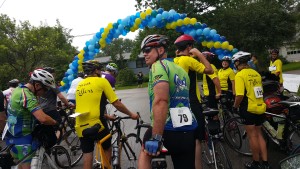
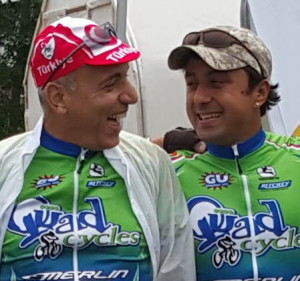

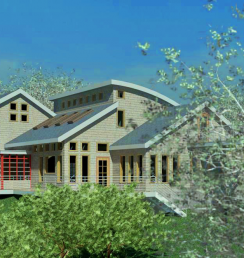
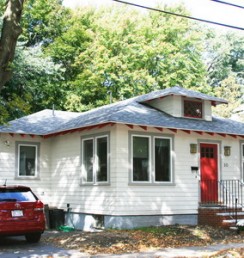
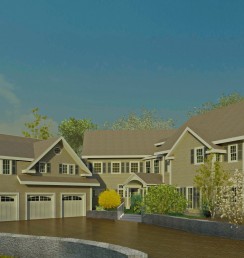
Leave a Reply